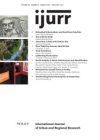Selected statistical time‐series covering the 30‐year period from 1965–94 were studied to determine general trends of both economic development and population growth of urban settlements in the Negev desert of Israel. The research indicated that in comparison with urban settlements located in central ‘non‐desert’ districts of the country, peripheral desert localities tend to exhibit wider fluctuations of economic activity, unstable population growth, and an attenuation of general urbanization trends that manifest themselves elsewhere across the country. The research led to a set of analytical models designed to explain development peculiarities of peripheral desert settlements. In addition, several planning strategies were proposed, aimed at enhancing the socio‐economic sustainability of existing settlements in peripheral desert areas and facilitating prospective urban development there. These include: (1) the establishment of development clusters consisting of urban settlements which share some essential interregional functions such as employment, educational, cultural, and recreational services and facilities; (2) the adoption of a system of progressive economic incentives to promote private investment in peripheral desert areas; and (3) stricter regulation of land use in the central, non‐desert regions of the country. Although the present analysis was restricted to small and medium urban settlements in Israel, the mode of analysis and its practical applications can be useful for urban and regional planning elsewhere.
Details
Written by:
Boris A. Portnov, Evyatar Erell
Digital Object Identifier (DOI)
10.1111/1468-2427.00136
About DOI
Read full article as PDF
Read full article as HTML
See the references for this article
